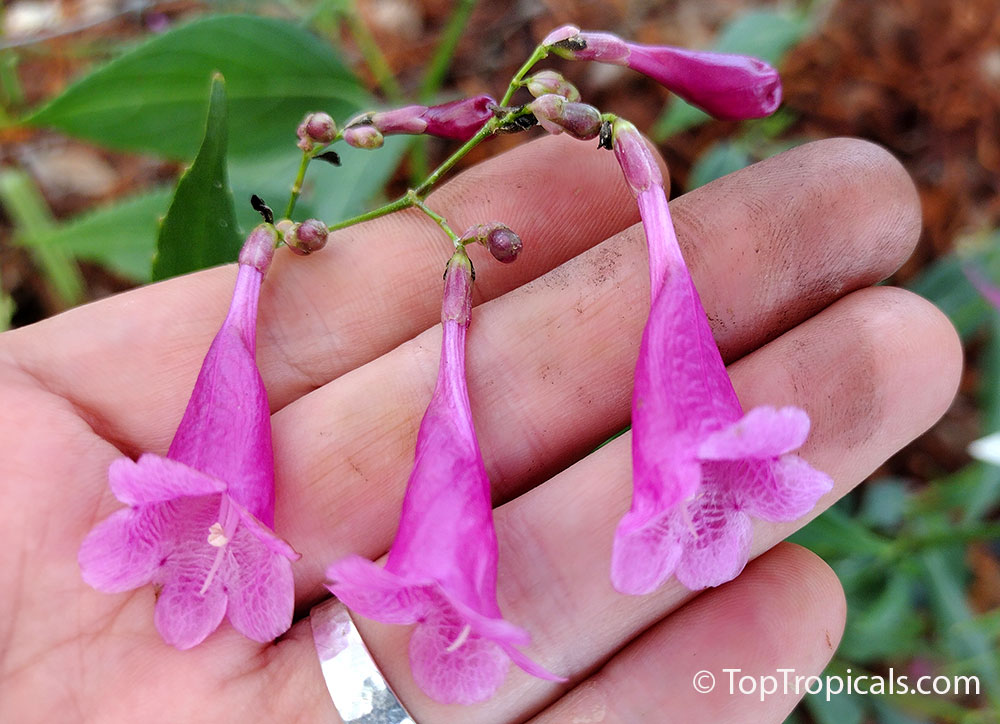Strobilanthes, Chinese Rain Bell
by Alex Butova, the Witch of Herbs and Cats
Alexandra Butova is our columnist, journalist, and photographer, living in Riga, Latvia. She has has been with TopTropicals since Day One (2002), writing about magic plants, travel, and of course cats - from the CatNation she belongs to. Alex is in charge of TopTropicals.ru website.
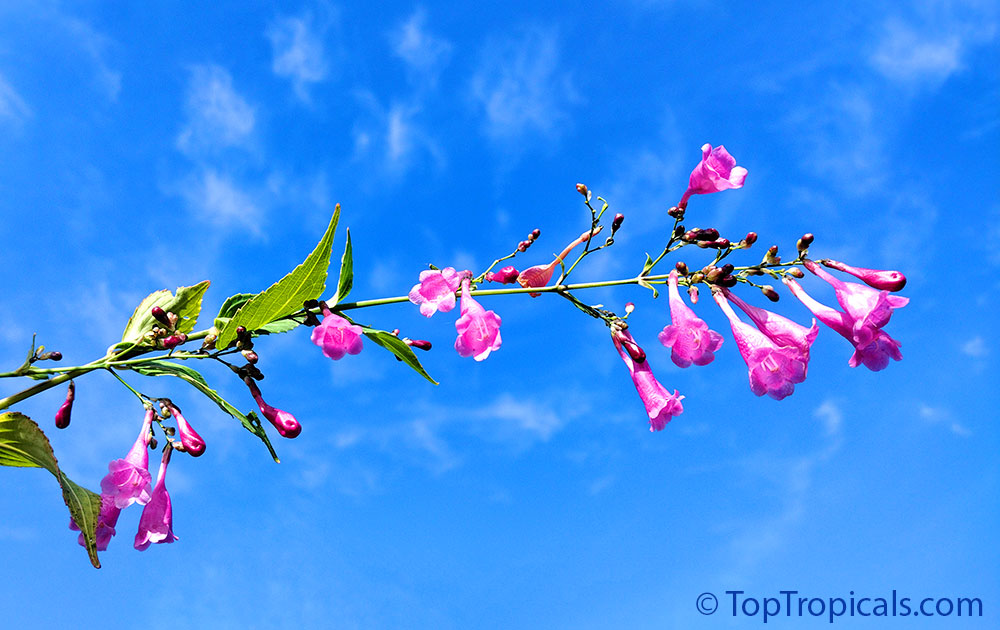
...Spectacular, elegant, fountain-like small shrub, featuring thin arching branches covered with pink bell flowers from Fall throughout Winter and Spring. And yet is has a rich history of use: extensive medicinal properties as well as a source of the famous dye Assam Indigo. The leaves and stems contain indican, used in production of the classic Blue Indigo Dye. A dark Blue dye is obtained from the twigs. It is combined with Turmeric (Curcuma longa) to make Green, and with Safflower (Carthamus tinctorius) to make Purple...
...Cold hardy, compact, yet fast growing and easy, it makes a wonderful container specimen even for beginners...
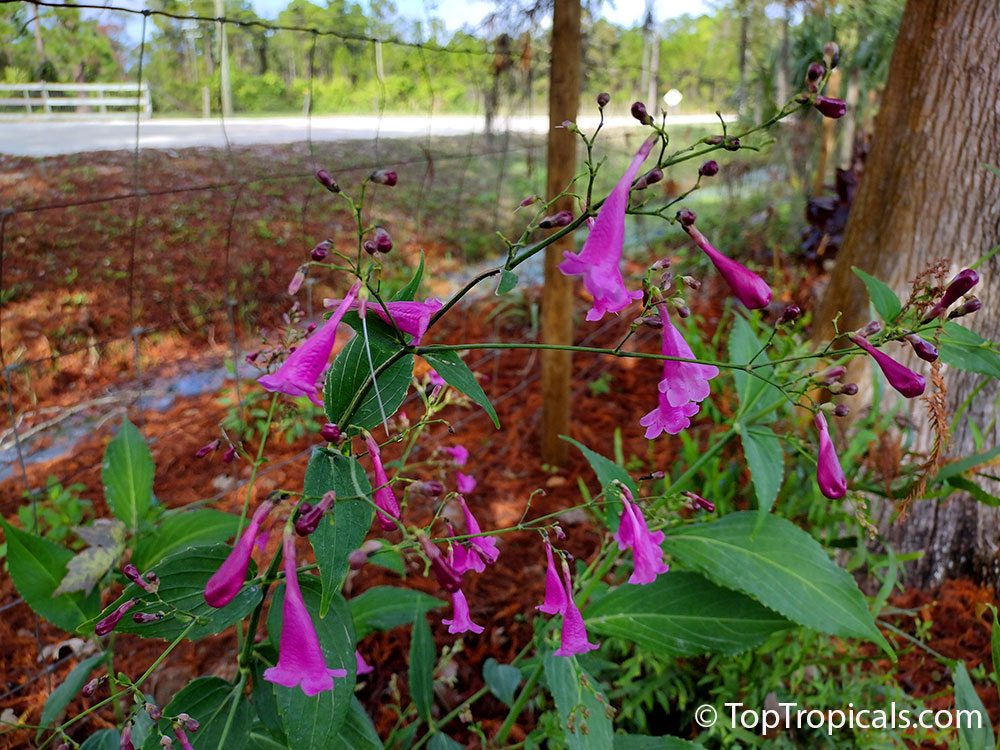
Strobilanthes, Chinese Rain Bell - a source of Blue, Green, and Purple...
Chinese Rain Bell is now known botanically as Strobilanthes cusia (previously Strobilanthes flaccidifolia). It belongs to Strobilanthes genuscontaining about 350speciesofflowering plantsin thefamilyAcanthaceae, mostlynativetotropicalAsia and Madagascar, but with a few species extending north intotemperateregions of Asia.
Strobilanthes cusia native to Eastern Asia - China, India, Bhutan, Bangladesh, Myanmar, Thailand, Laos, Vietnam. Usually found in moist wooded places, at elevations from 320- 6,500ft.
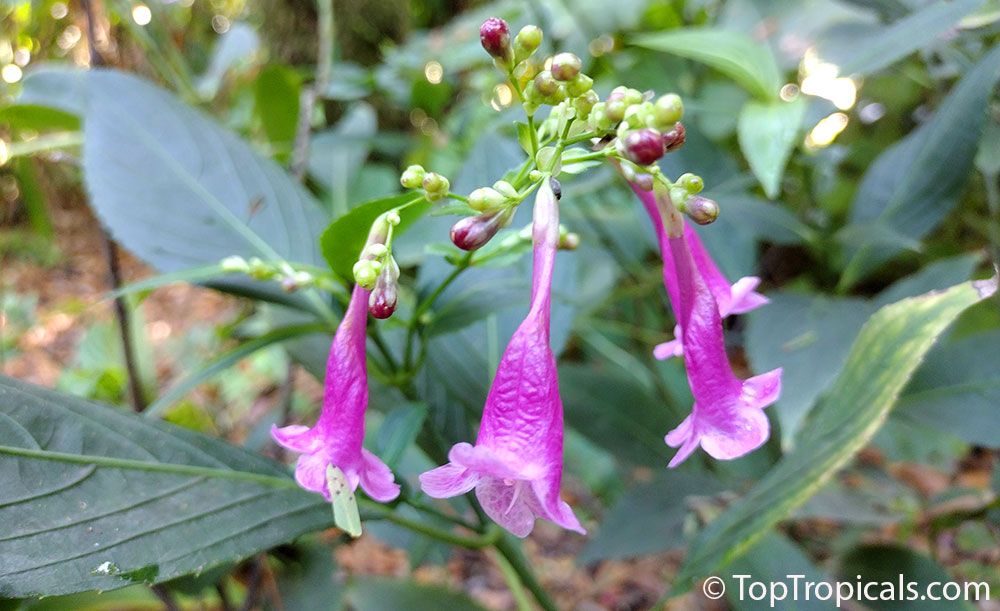
This very showy plant is an erect, moderate size herbaceous branched shrub, up to 5ft tall, with an elegant, fountain-like look, featuring thin arching branches covered with pink bell flowers from Fall throughout Winter and Spring. The drooping leathery leaves are dark green on top and pale green below. They are slightly glossy with distinctive rib-like veins and edges.
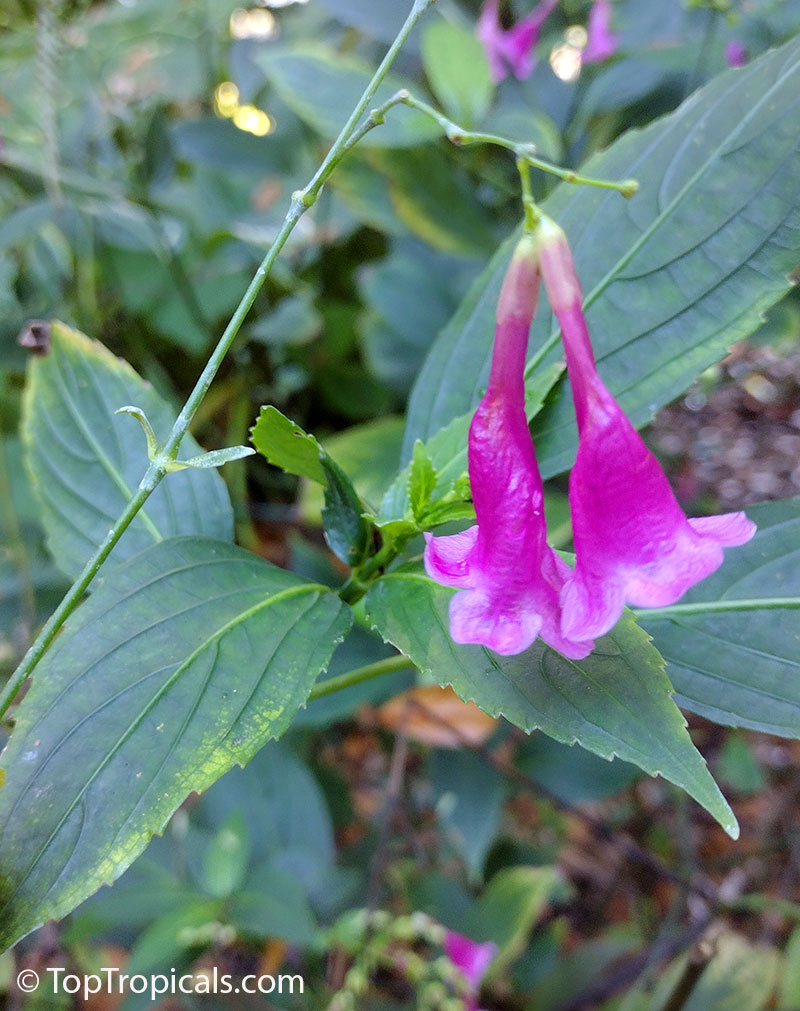
The plant comes into bloom in autumn and continues into winter with many delicate soft pinkish-purple flowers produced on long and wispy inflorescence. Whole flower is about 1.5-2" long. The flowers are pollinated by butterflies and other insects.
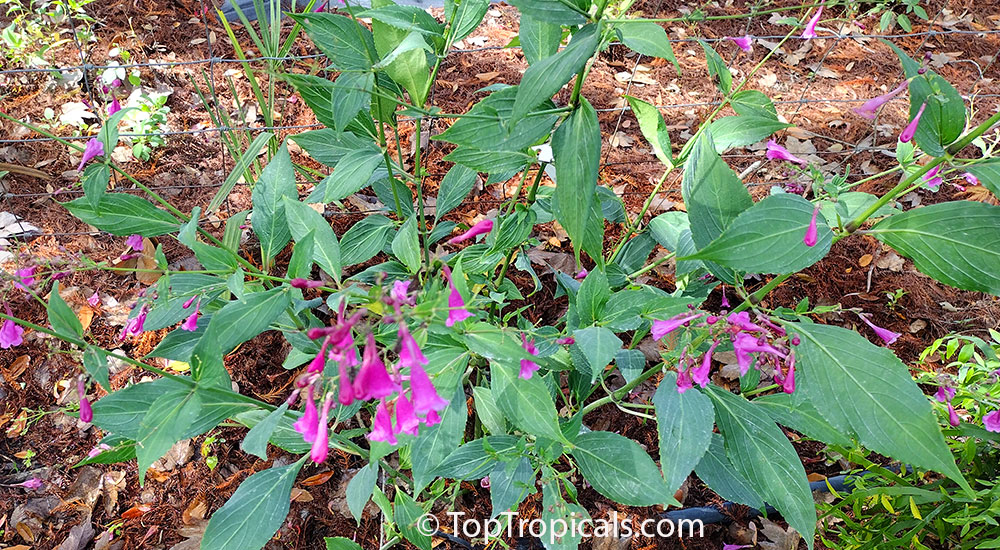
In native habitat, Chinese Rain Bell is harvested from the wild for local use as a medicine and a dye. Plants can be harvested 2-3 times a year for their young shoots.
In ancient China, this plant, containing blue pigments, was called Lan and used to dye cloth.The Book of Songs(Shijing) - the oldest collection of poetry in world literature and the finest treasure of traditional songs left from antiquity, says - "Lan picked from one morning to one night is not enough for one garment dyed", depicting the scene that people picked Lan to dye cloth.

The source of famous dye Assam Indigo, it was formerly cultivated on quite a large scale as a dye plant in China and India, but has now been superseded by artificial dyes and is only grown on a small scale. The leaves contain 0.4 - 1.3% indican, which can be hydrolyzed and oxidized to produce the classic Blue Indigo Dye. A dark Blue dye is obtained from the twigs. It is combined with Turmeric (Curcuma longa) to make Green, and with Safflower (Carthamus tinctorius) to make Purple.
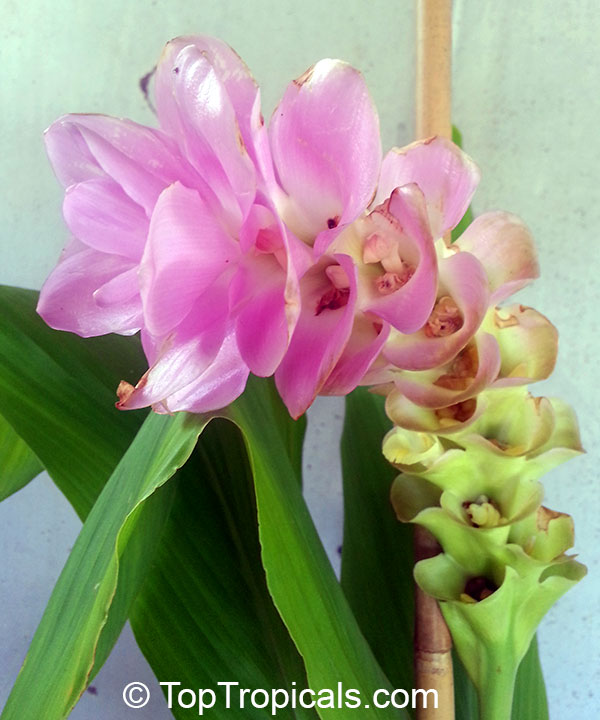
Turmeric (Curcuma longa)
Modern studies indicated that some of Strobilanthes cusia components have multiple pharmacological effects including resistance to cancer, remission of inflammation, suppression of microorganisms, relief of dermatoses, and so on.
Strobilanthes cusia is such a traditional Chinese medicinal plant with a long medicinal history of about one thousand years. In Traditional Chinese Medicine, different parts of one plant can be processed into different medicines with different effects.A decoction is used in the treatment of epidemic mumps, sore throat, erysipelas and fever-caused rashes. The leaves possess antibacterial, antifebrile, antioestrogenic, antiprogestogenic, astringent, diuretic, lithotriptic and uterostimulant properties. A decoction is used in treating menorrhagia, metrorrhagia, sore throat, gingivitis and fever. In high doses, they are abortifacient in the early stage of gestation. The roots and leaves are anti-inflammatory, depurative and febrifuge. The leaves are astringent, diuretic and lithotriptic. A poultice of leaves is used to treat ague. A plaster of condensed extract helps to cure eczema and impetigo. Fresh juice from the leaves is used on Okinawa Island, Japan as a popular remedy for athlete's foot.
Leaves contain the glucoside indican, which yields glucose and indoxyl on hydrolysis. Indoxyl yields indigotin upon oxidatiol. They are collected in autumn, before the plant flowers, and then dried in the shade.
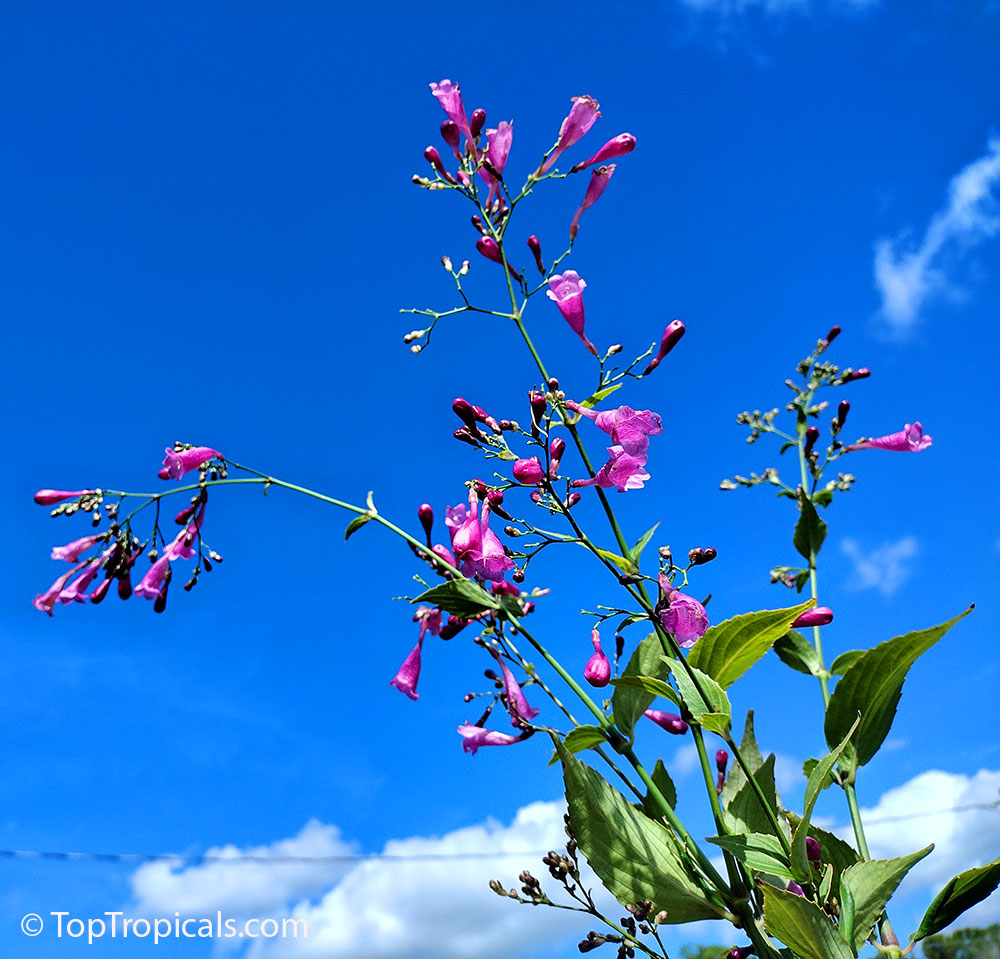
Gorgeous Chinese Rain Bell is a wonderful treat for both gardens and patio settings; its attractive flowers make a lovely houseplant in the northern areas. It is relatively cold hardy and can take some light frost without sugnificant damage. The plant needs minimum care: well-drained soils; semi-shade to full sun and moderate watering. And of course a good food - everybody likes to eat! Your best choice is fertilizer SUNSHINE Megaflor - Bloom Nutrition Booster.
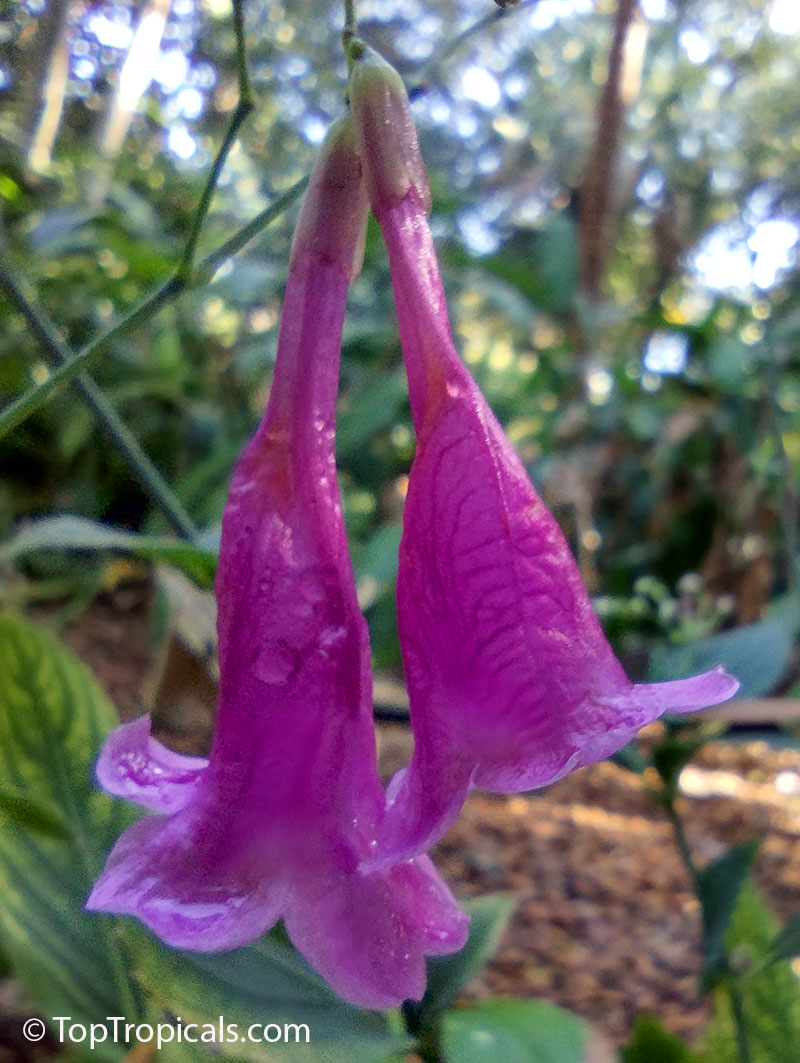
See more articles by Alex Butova

